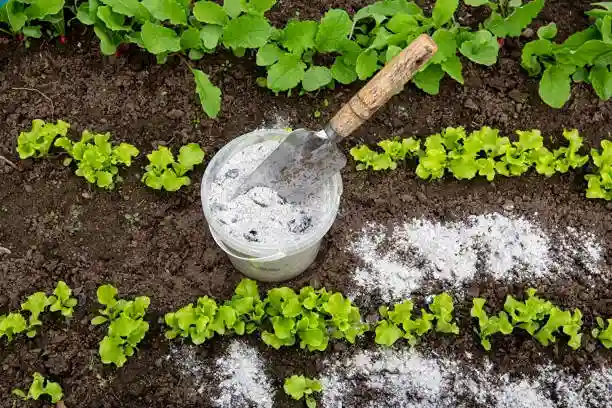Using wood ash in the garden can be an excellent way to enrich your vegetable garden soil, offering essential nutrients for plant growth. Whether it’s from firewood ash or ashes from a fireplace, wood ash provides valuable minerals like potassium, calcium, and magnesium. But, before applying, it’s important to know which plants will benefit and how to use it effectively.
In this guide, we’ll understand How to Use Wood Ash in Vegetable Garden and discuss about basics of using wood ash in your garden, whether you want to boost your soil’s nutrients or keep pests away.
Tools Needed
For using wood ash in the vegetable garden, following tools will be required:
pH testing kit (to check soil acidity) (optional)
Gloves (for handling ashes)
Trowel or garden rake (to spread and mix ash properly)
Compost bin (optional, for mixing ash with compost)
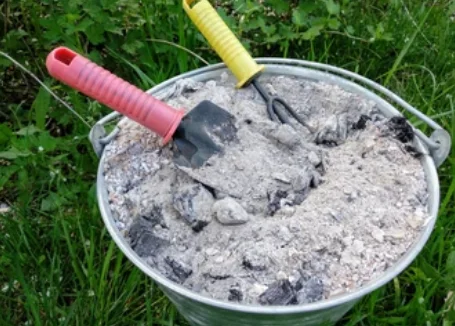
Source: istock
What is Wood Ash Made of ?
Before diving into how to use wood ash for gardens, it’s helpful to know what it’s made of. Wood ash is the leftover powdery substance after burning wood, such as from firewood, logs, or even tree branches.
This ash is rich in nutrients, particularly potassium (which is essential for plant growth), calcium, magnesium, and trace minerals like phosphorus and iron. When used correctly, it can be an effective way to improve soil fertility.
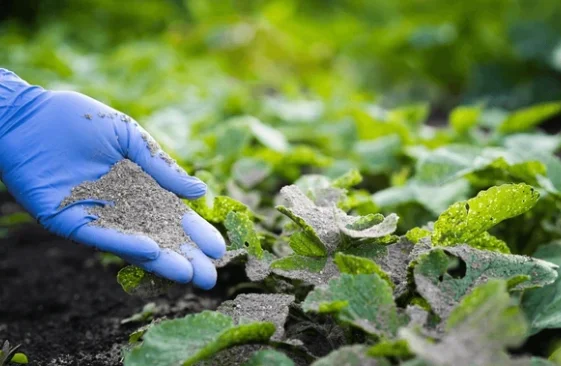
Source: istock
How to use Wood Ash for Plants
To use wood ash for plants, first make sure it’s from natural wood. Wood ash provides essential nutrients like potassium and calcium, which helps in plants healthy growth. Lightly sprinkle a small amount of ash around plants that prefer alkaline soil, such as tomatoes and carrots, but avoid using it around acid-loving plants like blueberries, azaleas. Mix the ash into the topsoil to help it absorb well.
You can also add wood ash to your compost to balance the acidity and enrich it with minerals. Be careful not to overuse it, as too much ash can make the soil too alkaline. If used properly in right proportion, then wood ash can give your plants a healthy boost.
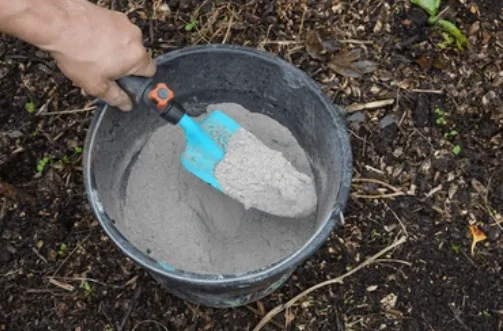
Source: istock
Which Plants Benefit from Wood Ash ?
Not all plants enjoy the same soil conditions, and some might not like wood ash at all. So, it’s important to know which plants benefit from wood ashes and which don’t.
Plants that benefit from wood ash:
Vegetables: Tomatoes, beans, peppers, and spinach all love a slightly alkaline soil and can benefit from wood ash.
Fruit trees: Apple, peach, and pear trees, as well as berry bushes, thrive in soil with added wood ash.
Perennials: Many perennial plants, including roses, also appreciate a little wood ash in their soil.
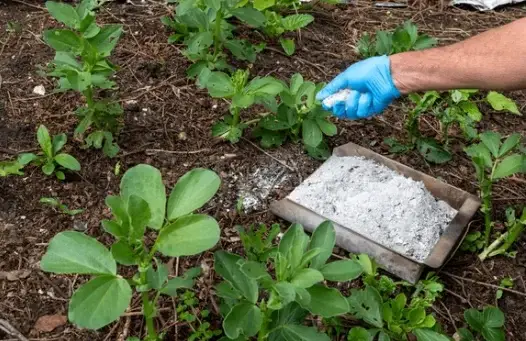
Source: istock
Plants that don’t like wood ash:
Acid-loving plants: Blueberries, azaleas and other acid-loving plants do not like alkaline soil, so avoid using wood ash around them.
If you’re unsure about which plants like wood ashes, a simple soil test can help guide your decisions on how much to apply.
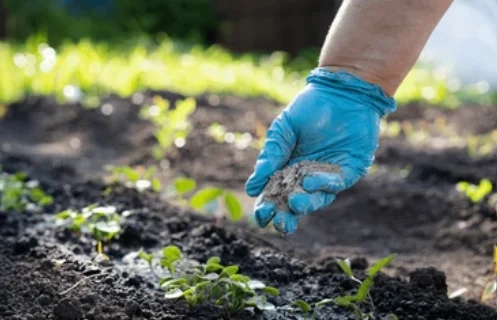
Source: istock
How to use Wood Ash in Garden
To use wood ash in the garden, start by ensuring the ash is from clean and untreated wood. Sprinkle a light layer of ash over the garden beds to add nutrients like potassium and calcium, which help plants grow strong. It’s especially useful for balancing the acidic soil, but avoid using it around the plants that prefer acidic conditions, like azaleas or blueberries. Gently mix the wood ash in the top layer of soil, so that it can absorb in the soil.
You can also add small amounts of wood ash to your compost to enrich it, but be careful not to add too much. Use sparingly and only once or twice a season to prevent the soil from becoming too alkaline. With these simple steps, wood ash can be a used for adding a natural boost to your garden.
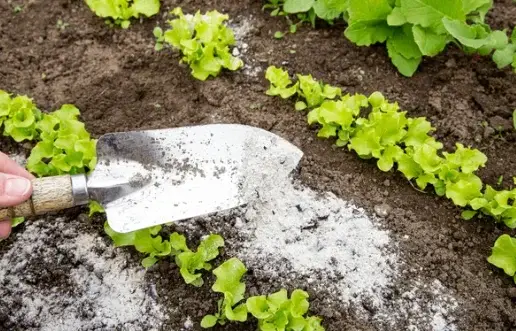
Source: istock
How to Test Your Soil pH
Before applying wood ash in the soil, start by testing your soil’s pH level. If your soil is already alkaline, you should use wood ash sparingly, as it could make the soil too alkaline for some plants.
Tip: Mostly the vegetable gardens benefit from a slightly acidic to neutral soil (pH 6 to 7). Wood ash is very useful in the gardens, where the acidic level of the soil is low (pH below 6).
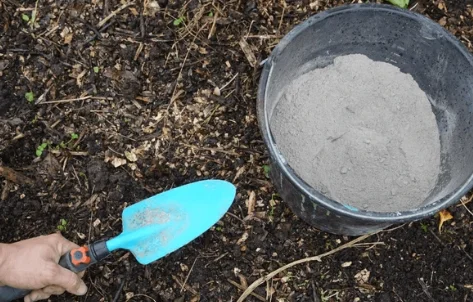
Source: istock
How to use Wood Ash as Fertilizer
To use wood ash as fertilizer, make sure it’s from untreated, natural wood. Wood ash is rich in potassium and other minerals, which helps plants to grow strong and healthy. Sprinkle a thin layer of ash around your plants, especially those that love a slightly alkaline soil, like tomatoes and beans. Be careful not to overuse it too much, as it can make the soil too alkaline and hurt your plants.
It’s best to mix it lightly into the top layer of soil or add it to your compost pile, where it will blend with other nutrients. Always wear gloves and avoid using it near plants that prefer acidic soil like azaleas, blueberries. By following these steps, you can use wood ash as a natural and organic fertilizer in your garden.
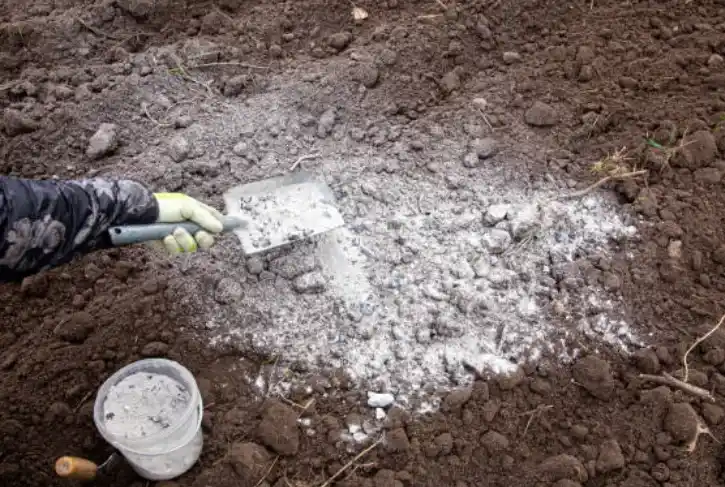
Source: istock
Benefits of using Wood Ash in Garden
Here, we’ll explore the benefits of using wood ash in the garden and understand how it helps in improving your soil health and boosts plant growth.
Balance Soil pH
Wood ash helps in balancing the acidic soil by raising the pH level of the soil. If you have a garden with acidic soil (a common issue in many areas), using wood ash can help make the soil more neutral. This is particularly beneficial for plants that prefer a slightly alkaline environment, such as tomatoes, cabbage, and spinach.
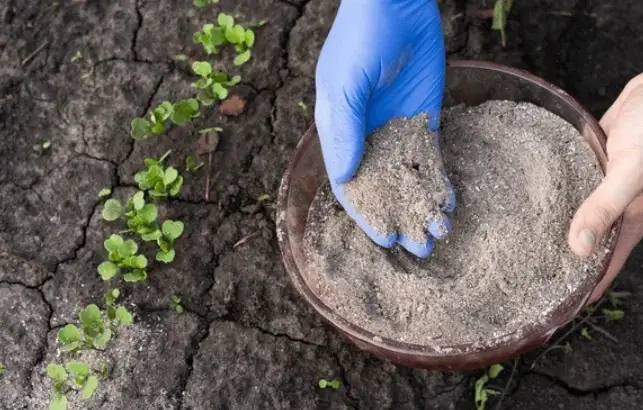
Source: istock
Nutrient Boost
Wood ash is an excellent source of potassium, an essential nutrient that helps plants with water retention, disease resistance, and overall growth. The calcium in wood ash can improve the structure of the soil. When you use wood ash as a fertilizer, you’re giving your plants an organic boost.
Pest Control
Wood ash can also help with pest control. Some gardeners use it to deter slugs and snails from munching on their plants. Sprinkling a light layer of wood ash around the base of plants can boost your plants growth and keeps the slugs away.
Composting Aid
You can use wood ash in your compost bin for making compost for your garden. It helps to balance the carbon-to-nitrogen ratio and can speed up the decomposition process. Just remember to use wood ash sparingly in your compost pile, as too much can make the compost too alkaline for some microbes to thrive.
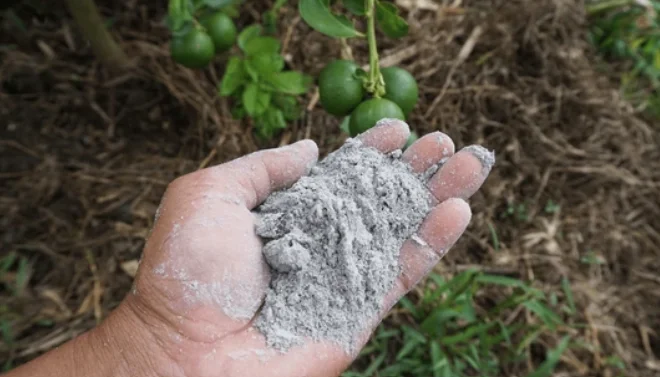
Source: istock
How to Use Wood Ash in the Garden
When applying wood ash in the garden, always use it in right proportion for your plants. Overuse can lead to nutrient imbalances and even harm the plants. Here’s how you can do it effectively, by following these simple steps:
Fertilizer for Plants
Wood ash acts as a great natural fertilizer for your garden. It is rich in potassium, which helps promote root growth, fruit development, and disease resistance in plants. The wood ash fertilizer works wonders for certain vegetables like tomatoes, peppers, and cabbage.
Simply sprinkle a pinch of wood ash for garden use, around the base of the plants. It’s best to apply it during the growing season, but avoid using it on acid-loving plants like blueberries or azaleas, as the ash can make the soil too alkaline for them.
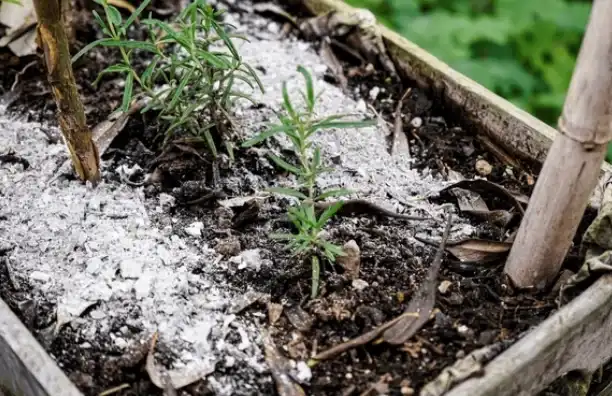
Source: istock
Improves Soil pH
Wood ash helps in raising the pH level of the soil, makes it more neutral in texture. It balances the overly acidic soil and creates better soil structure for most vegetables growing conditions.
To use it for pH improvement, spread a thin layer of wood ash in garden beds and mix it well with the soil. This is especially useful if you’ve tested your soil and found it to be acidic.
Composting with Wood Ash
Another great way to use wood ash is by mixing it with your compost. Wood ashes in compost help to add essential nutrients like calcium and potassium, improving the overall fertility of your compost. Just be careful not to add too much, as wood ash for compost can sometimes create a highly alkaline mix. A handful of wood ashes for garden compost should be enough.
As a Pest Repellent
Wood ash can act as a natural pest repellent for your plants. You can sprinkle wood ash around the corner of your garden or directly on your plants to deter pests like slugs and snails.
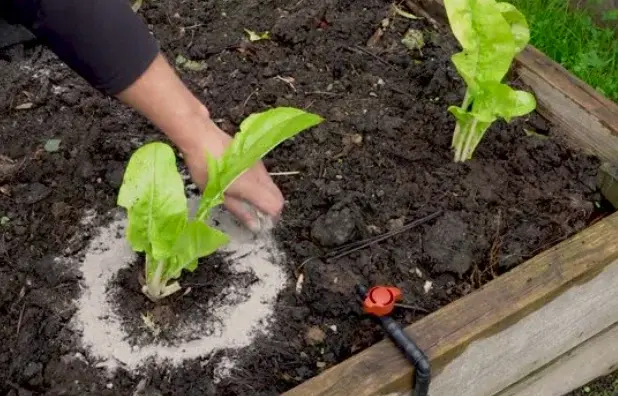
Source: istock
For Fruit Trees and Shrubs
Certain trees, such as apple and pear trees, can benefit from wood ash for gardens. The wood ash will boost the plants growth as well as the nutrients present in it will help these plants to grow stronger and produce more fruits. Simply spread a thin layer of wood ashes in garden around the base of the plant or tree and mix it into the soil.
In Raised Beds and Containers
If you have raised garden beds or containers, wood ash in the garden can be used to enhance the soil. Make sure to check the pH of the soil first. In small spaces like containers or pots a little pinch of wood ash goes well, so use it sparingly.
As a Winter Soil Treatment
Before winter sets in, you can apply wood ash to your vegetable garden to enrich the soil. The nutrients from the wood ash in garden will slowly break down over the winter months and your plants will begin to grow in the spring season.
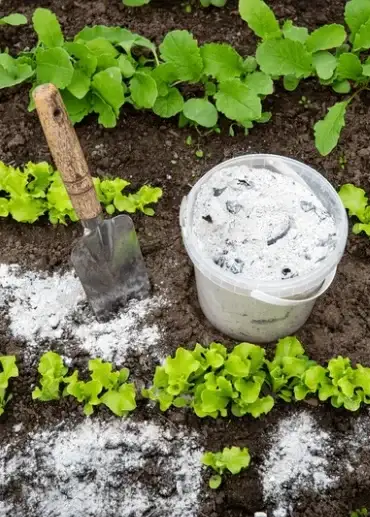
Source: istock
How to use Wood Ash in Compost
To use wood ash in the compost, add it in small amounts to balance the nutrients in the compost pile. Wood ash is rich in potassium and calcium, which benefit plants, as it’s alkaline and can be used sparingly. Sprinkle a thin layer of ash over the compost and mix it well to prevent from clumping. Avoid adding ash from treated wood, as it may contain harmful chemicals.
Wood ash can raise the compost’s pH, avoid adding too much if your compost has a lot of green materials, which are already high in nitrogen. By using wood ash properly, you can create a natural and more balanced compost for your garden.
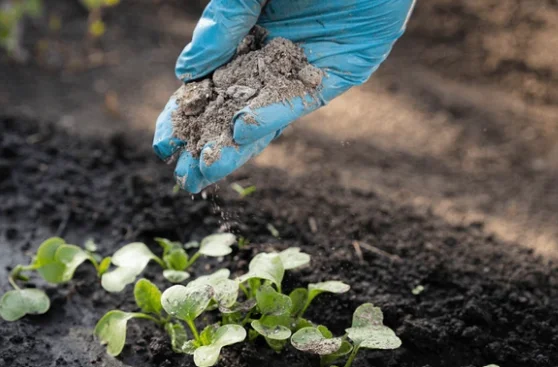
Source: istock
Conclusion
Wood ash can be used as a natural fertilizer that improves the quality of the soil and it adds a great addition to your garden by providing essential nutrients like potassium and calcium to the plants. Using wood ash in right consistency can be beneficial in improving the soils health, boosting plant’s growth and even control the garden pests.
With careful application, wood ash will support healthy growth in many of your vegetable plants. Remember to apply sparingly, start by checking your soil pH and avoid adding ash to acidic soil-loving plants. Hope it helps!
Frequently Asked Questions (FAQs) about How to Use Wood Ash in Vegetable Garden
Is wood ash good for the garden?
Yes, wood ash is beneficial for the garden when used in right consistency. It’s especially good for soil that needs alkaline soil.
Can I put wood ash around the fruit trees?
Yes, wood ash can help fruit trees by adding potassium, but apply sparingly to avoid altering the soil pH too much.
What plants benefit most from wood ash?
Flowering plants, tomatoes, peppers, and other potassium-loving veggies benefit most from wood ash.
Is firewood ash good for gardens?
Yes, as long as it’s from untreated wood. Ash from treated or painted wood contains chemicals harmful to plants.
How often should I add wood ash to the garden?
Once or twice a year is usually sufficient. Too much wood ash can disrupt the soil pH.
Can I use wood ash on all plants?
No, avoid using wood ash on plants that prefer acidic soil, like blueberries and strawberries.
What can you use wood ash for in the garden?
Wood ash is excellent for raising soil pH, adding potassium, and improving nutrient levels for flowering plants and veggies.
Where to use wood ash in the garden?
Apply wood ash around veggie beds, flowering plants, and trees, but avoid acid-loving plants like blueberries.
How to use wood ash in the garden?
Sprinkle a thin layer of wood ash over soil, and gently mix it well and avoid using too much in one spot.
When to use wood ash in the garden?
Use wood ash in early spring or late winter to give plants a nutrient boost as they start growing.
How to use ash for the plants?
Apply ash around the base of plants needing potassium, like tomatoes, but keep it away from acid-loving plants.
How can I use wood ash in the garden?
Sprinkle it lightly over soil and mix well, or add to compost in small amounts for added nutrients.
Can you put wood ash in the garden?
Yes, wood ash is beneficial when used sparingly, improving soil health and adding essential nutrients.
How to use wood ashes in the garden?
Spread a thin layer over soil, or mix into compost for potassium-rich, balanced nutrients.
Which vegetables do not like wood ash?
Acid-loving plants like azaleas, blueberries, cranberries and potatoes don’t benefit from wood ash, as it raises the soil pH.
Is wood ash good for tomatoes and peppers?
Yes, tomatoes and peppers benefit from the potassium in wood ash, which supports strong roots and fruit growth.
When should I add wood ash in my garden?
Add wood ash in early spring or fall to give plants a gentle nutrient boost as they grow.
Do carrots benefit from wood ash?
Yes, carrots can benefit from wood ash, as it promotes better root development.

